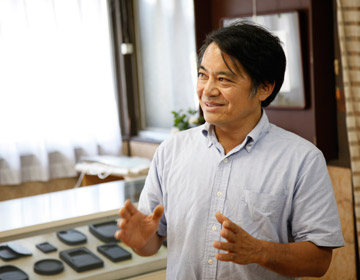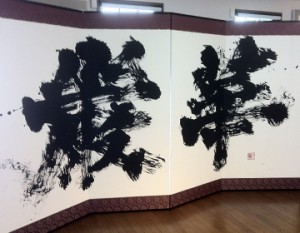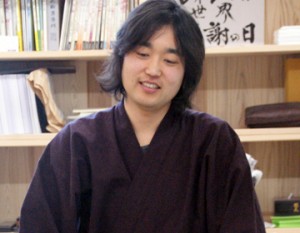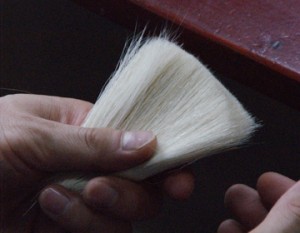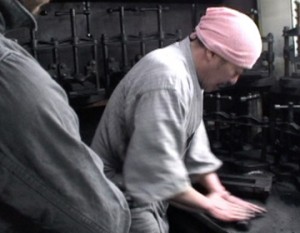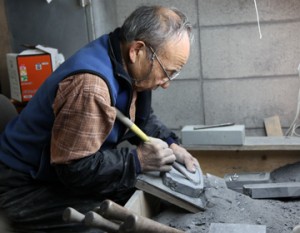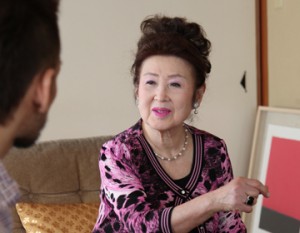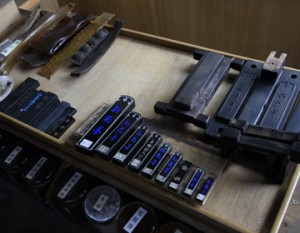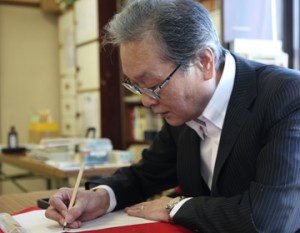The stone suitable for inkstone is only a layer of 40 centimeter thick in the quarry.
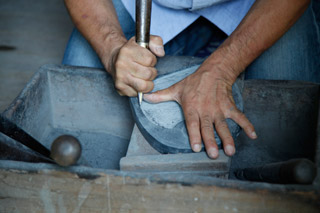
”First of all, I’d like you to take a look at the quarry for the inkstone.” Yataro Amemiya took us up along the Amehata River, and there was a cave, dug into a pitch black cliff. This was the quarry where slate to make ”Amehata inkstone” was mined.
”The really best stone is only this 40 centimeter thick layer,” explained Gyokusen Mochizuki, who has been in charge of the quarry for a long time. He has been digging into this layer of slate a little by little.
He drove the chisel into the rock and the sound of the hammer echoed in the cave. A piece of rock fell off. The clean cut surface had a slight luster. ”These neighboring rocks here, aren’t these good material?” asked Nakata. ”The stone that grinds ink well must evenly contain the particles of stone called ”hobo”. Such good stone is only this layer,” said Amemiya.
Spotlighting the Japanese art of stones.
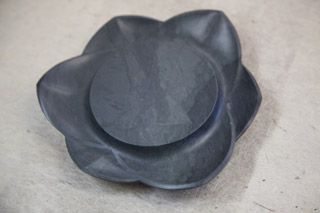
After we were shown around the cave, Amemiya took us to his workshop and showed us his works. Generally, one would imagine inkstones to be square, as used for calligraphy, but there were many different forms, such as the ones with untamed shapes of natural stone, or the ones with designs along the rim, or the ones with shapes of plants and animals. The works were so interesting that one would never tire of looking at them. ”I never knew inkstones can take such beautiful forms.” Nakata was very impressed.
”In Japan, I think stone craft did not develop very much, including the craft of inkstone. For example, the cases for inkstone are studied very much, but the inkstone itself is not. But there are pieces of work which were clearly intended for artistic appreciation rather than practical use. I want people to appreciate the aesthetic side of inkstone, and I am making pieces with motifs of birds and trees for exhibition.” Among his works, there are very small pieces and pieces that look like sculpture rather than inkstone.
”What is a good inkstone?” asked Nakata, and Amemiya answered, ”An inkstone is a tool to meditate into one’s own soul.” ”As you grind the ink stick, you calm your mind. I think an inkstone is a tool to make time for meditation. So, I want to pursue a form of inkstone that has such beauty of form that it calms one’s mind just by looking at it.”



